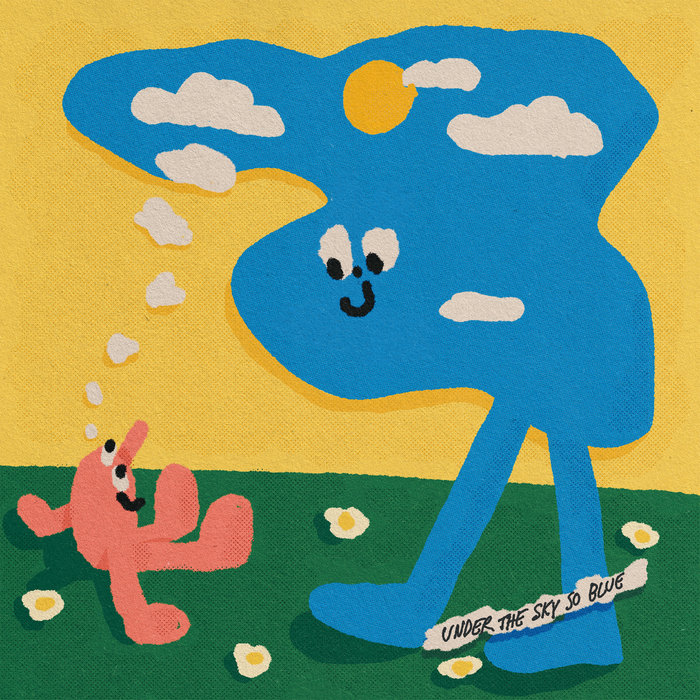
under the sky so blue – beatboxbandit
this blog is GROOVY – check out great Soul, Funk, Jazz, Hip Hop, Bass, Breaks , Reggae, House n many more TUNES
Hey there, music lovers! Grab your headphones and settle in because we’re diving deep into the funky world of loops! From cheeky samples to hypnotic repetition, loops have been a game-changer in music production. So let’s break it down, step by step, with some groove-infused tidbits along the way!
At its core, a loop is just a segment of sound that repeats over and over again. Imagine you’ve got an infectious bassline or catchy beat that you can’t get enough of—well, that’s exactly what looping does! It takes those sweet musical moments and gives them new life.
Loops have been around longer than many think. Way back in the 1940s and ’50s, avant-garde composers like John Cage were experimenting with tape machines to create repetition. These pioneers laid the groundwork for what would evolve into all sorts of genre-bending experimentation.
However, it was in the 1960s when things really started to heat up. Musicians like The Beatles embraced tape loops on tracks like “Tomorrow Never Knows.” They tossed ordinary sounds into extraordinary realms—just a little sprinkle of creativity goes a long way!
Did you know that during recordings for “Tomorrow Never Knows,” they used actual tapes from old radio shows? Talk about recycling before it was cool!
As we grooved through the ’70s with funk and disco hitting their stride, musicians discovered how powerful repetitive grooves could be. Iconic figures such as George Clinton took looping concepts to new heights with wild rhythms and psychedelic vibes.
Funk bands like Parliament-Funkadelic would layer grooves endlessly while encouraging everyone on stage (and off) to dance freely—because why stop at one loop when you can jam forever?
Some disco tracks clocked in at over eight minutes long primarily due to relentless looping! Who needs brevity when you’re creating dancefloor magic?
Fast forward to the late ’70s through early ’80s; enter hip-hop—the genre where loops truly became legendary! DJs began using turntables as instruments themselves, pulling out snippets from records only they could envision being part of something bigger.
Take DJ Kool Herc, who’s often credited as one of hip-hop’s founders; he’d isolate drum breaks from funk records and repeat them till people couldn’t help but move. This birthed countless classics built upon looped beats.
And remember those hilarious mixtapes filled with absurd samples? You’d never believe how much time artists spent digging through grandma’s old vinyl collection for bizarre sounds just for kicks!
There’s a famous anecdote about how DJ Premier sampled an old jazz tune but cut out all but two notes just because he thought they sounded cool together—to this day it’s known as “the classic mistake” that turned genius track “Mass Appeal” into an anthem!
As technology boomed throughout the ’90s and 2000s so did our ability to create endless loops digitally! With Digital Audio Workstations (DAWs) emerging onto the scene—a whole universe opened up.
Take artists like The Chemical Brothers or Daft Punk, who harnessed these tools not only musically but visually too—from live shows full-on encasing fans inside trippy visuals soaring above wobbling basslines made entirely from snazzy loops.
And let’s not forget iconic acts such as Moby whose entire career played out peddling addictive repeating melodies across various genres—all thanks to ingenious use-looping techniques built around sampling his own dirt-cheap street recordings turning mundane everyday noises into beautiful art forms!
Moby recorded most parts on his first album with nothing more than cheap microphones near washing machines—and yet major labels fawned over him thinking they found gold within household chaos!
Today every genre has embraced repetitive structures creatively connecting us all far beyond traditional conventions—from EDM festivals where thunderous drops reign supreme down nicely curated indie rock albums layered on tenuously elegant atmosphere inviting listeners repeatedly exploring inward each song uniquely crafted within unyielding limits seemingly infinite possibilities everywhere—even TikTok challenges bursting viral trends looping catchy hooks inside everyone’s heads globally overnight!
Musicians are constantly pushing boundaries forward while retrieving old-school inspiration reshaping societies outlook towards harmonious sounds unlike anything witnessed before—the endless wave continues flowing forth undoubtedly leaving behind glimmers charm nostalgia still living today feels oh-so-reminiscent unpredictably delightfully groovy ride indeed awaits!
Ever heard about “loop hold”? You know…that moment musicians hit record press play then leave studio grab coffee come back forgetting pressing stop afterwards spawning outrageous audio clips guaranteed repeated hilariously mishaps leaked online forever marking careers occasionally spectacularly strange ways?!
So there you have it folks—a vibrant history showcasing timeless influence alongside playful twists behind Loop Music Evolution. Whether you’re dancing under festival lights or vibing alone at home embrace EVERY sound bite repetition throwing joy sprinkled delightful sparkles right across lifetimes letting creativity flow genuinely free ultimately reminding stay curious discover phenomenal shapes emerge within rhythmic fun resulting pure blissful experiences forever more ahead 🎶✨

under the sky so blue – beatboxbandit